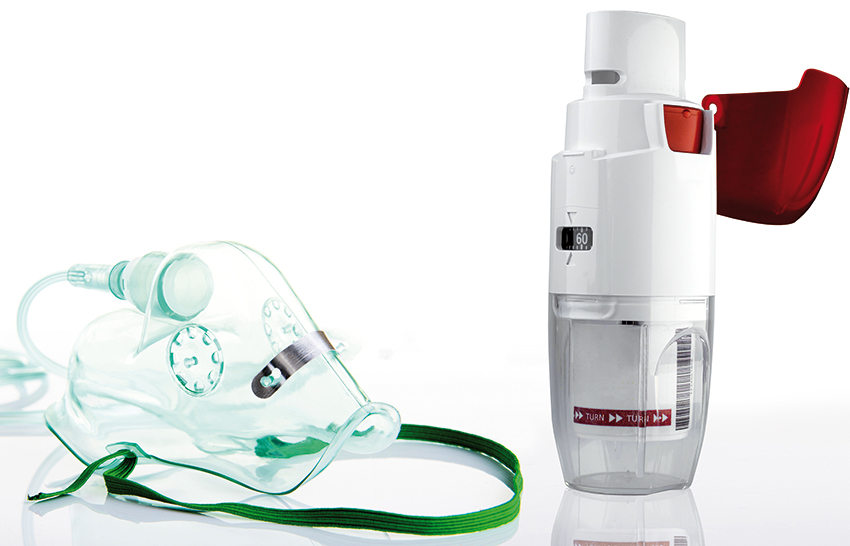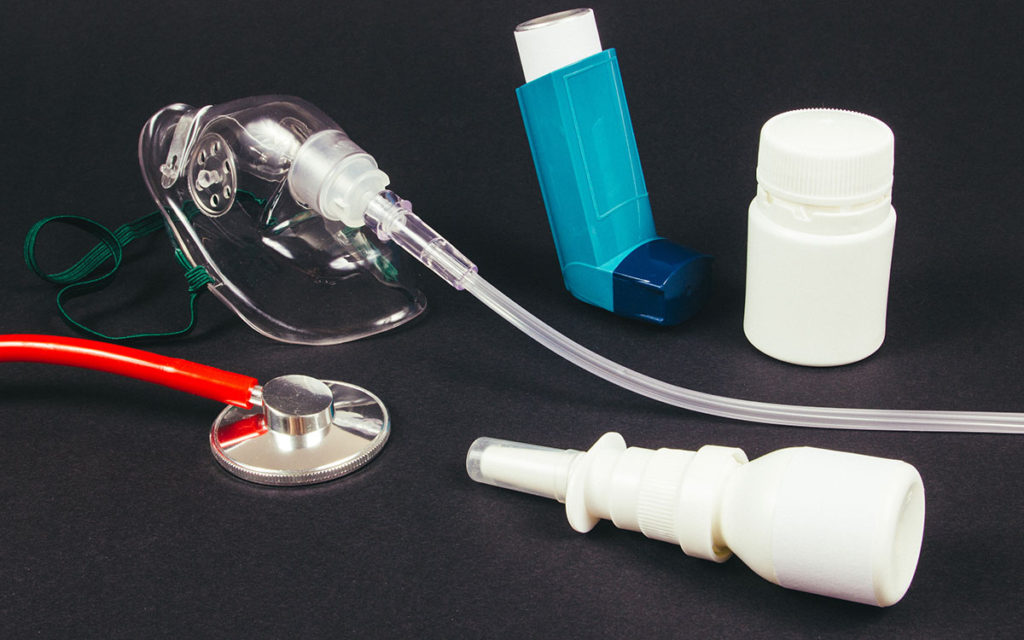
Date: 07 Nov 2025
When it comes to managing respiratory conditions such as asthma or chronic obstructive pulmonary disease (COPD), patients often face a choice between two main types of delivery devices: nebulizers and inhalers. Each has its advantages, limitations and best-use scenarios.
In this article you’ll find a detailed comparison of how they work, their key differences, and how to choose the right device for your needs. We also show you real product examples you can buy online in Kenya (via Pharmily) and answer frequently asked questions to help you make an informed decision.
What Is a Nebulizer and How Does It Work?
A nebulizer is a medical device that converts liquid medication into a fine mist or aerosol, which the patient then inhales through a mouthpiece or mask. Its mechanism involves a compressor or ultrasonic/mesh system that generates airflow, forcing the medication to disperse as tiny droplets. For example, the device labelled NEBZMART Nebulizer Machine is listed on Pharmily.
Because the medication is delivered in mist form, it can reach deep into the airways and is often easier for children, elderly patients, or those with coordination difficulties to use. Cleaning and maintenance are important: parts must be washed regularly, dried, and changed when needed. Also, using a nebulizer often takes more time than a single inhaler puff — sessions can last several minutes.
What Is an Inhaler and How Does It Work?
An inhaler (commonly a metered-dose inhaler or dry powder inhaler) is a compact device that delivers a measured dose of medication directly into the lungs when the user inhales or actuates the canister. It requires coordination: the user must press the inhaler (for a metered-dose inhaler) while inhaling (or use a spacer/chamber accessory to improve delivery).
For example, on Pharmily you’ll find devices like the AeroChamber Plus Flow-Vu Infant (Orange), which is designed to enhance inhaler effectiveness by providing a chamber that helps coordinate inhalation. Because inhalers deliver doses very quickly, they are convenient for immediate relief or maintenance therapy and are highly portable.
Key Differences Between Nebulizers and Inhalers

Portability
- Inhalers are highly portable: they are small, handheld and can be carried in a pocket or bag — ideal for on-the-go use, emergencies or travel.
- Nebulizers tend to be larger (especially compressor types), sometimes requiring a power outlet, mask and tubing — this makes them less convenient for travel unless you select a battery/mesh portable version.
- If you need something you can grab quickly and use outside the home, an inhaler may be more practical.
Cost
- In many cases, inhalers themselves may have lower upfront cost for the device, though medication cost and proper technique matter.
- Nebulizers often cost more (especially good quality ones) because of the compressor and accessories.
- However, ongoing costs (maintenance, medication volume) matter for both. It’s wise to consider not just device cost but total cost of ownership.
- For budget-conscious users, an inhaler may often be the more cost-effective choice.
Ease of Use
- Inhalers require good technique: synchronising actuation and inhalation, proper breath-holding after inhalation, cleaning mouthpieces regularly. Use of a spacer (such as A2A Spacer (210ml Valved Holding Chamber)) can help those who struggle with coordination.
- Nebulizers, by contrast, are often easier for users who cannot coordinate inhalation easily (children, elderly, very ill) because the device does much of the work. The user just breathes normally via mouthpiece or mask over several minutes.
- On the flip side, nebulizers require setup (tube, mask, possibly power), cleaning after use, and more time. If you prefer something quick and simple, inhalers are easy for many people.
Suitable Conditions
- Nebulizers are often preferred for more severe respiratory issues, children, patients who cannot use inhalers properly (poor hand-lung coordination), or when high volume treatment is needed (for example during acute exacerbations or hospitalization).
- Inhalers are excellent for maintenance therapy, milder or moderate conditions, rescue inhalation, and day-to-day management, especially in people who can use them correctly.
- It’s also important to follow medical advice: some medications may be formulated specifically for one type or the other. Always check with your healthcare provider.
Choosing the Right Device for Your Needs
Choosing between a nebulizer and an inhaler involves considering your lifestyle, condition severity, ability to use the device correctly, budget and convenience.
- Assess your condition – If a healthcare professional has indicated frequent exacerbations or you struggle with inhaler coordination, a nebulizer might be preferable.
- Consider your mobility and usage scenario – If you travel, work away from home or need something highly portable, an inhaler will likely be better.
- Technique and patient capability – Are you confident using an inhaler correctly (or with the help of a spacer)? If not, a nebulizer may give better results.
- Budget and maintenance – Consider not just the device cost but also accessories, medication costs, cleaning requirements and durability.
- Medication compatibility – Some drugs are only available in inhaler form, others in nebulizer form. Make sure the device you choose supports your prescribed medication.
- Consult your healthcare provider – They will advise on the device type that aligns with your diagnosis, lung function, age and lifestyle.
Product Examples
- The NEBZMART Nebulizer Machine listed on Pharmily is a good example of a home nebulizer setup suitable for those needing aerosol mist delivery.
- The AeroChamber Plus Flow-Vu Infant (Orange) available on Pharmily (KSh 7,099) illustrates an inhaler-spacer accessory designed to improve inhaler delivery in infants aged 0-18 months.
Using these product examples can help you visualise real device options and make a decision based on what you can buy online.
Spacer Chambers and Inhaler Efficiency
Using a spacer (holding chamber) with an inhaler improves medication delivery by allowing slower inhalation and reducing drug deposition in the throat. For example, the A2A Spacer (210 ml Valved Holding Chamber) on Pharmily is designed for both children and adults who need help with inhaler technique.
Cleaning & Maintenance of Devices
- Nebulizers: After each use, the medicine cup, tubing, mask/mouthpiece should be washed with warm water and mild detergent, rinsed thoroughly and air dried. Replace filters or parts as recommended.
- Inhalers/spacers: Clean monthly or as per manufacturer instructions. Keep the mouthpiece and spacer free of dust or residue.
Proper maintenance ensures optimal performance and avoids infections or reduced delivery efficacy.
Safe Online Buying Tips in Kenya
When buying medical devices online:
- Buy from a licensed pharmacy (for example, Pharmily is registered and guarantees genuine products).
- Ensure the device comes with warranty, clear instructions, parts availability and return policy.
- Check compatibility with your medication and confirm the device meets your needs before purchase.
- Understand delivery, shipping, after-sales service, and whether the device requires power supply or batteries.
In summary, whether you buy a nebulizer or an inhaler (or even both) depends on your respiratory condition, your ability to use the device properly, your mobility needs, cost limitations and medication type.
Nebulizers are ideal for those who may struggle with inhaler technique, need mist delivery over time, or are treating more severe conditions. Inhalers offer portability, convenience and are excellent for everyday use when technique is good.
Always consult your healthcare provider to determine the best device for your situation. And if you’re buying online in Kenya, choose a trusted pharmacy like Pharmily, review device specifications, maintenance requirements and ensure the device suits your lifestyle.
FAQs
Q1. Can I switch from an inhaler to a nebulizer anytime?
A: Not automatically. The decision depends on your specific medication, lung function, ability to use inhalers correctly, and doctor’s recommendation. Always consult your healthcare provider before switching.
Q2. Which device is faster in relieving symptoms?
A: Inhalers often deliver medication in a rapid, single-dose burst and may be faster for relief if used correctly. However, if you cannot use the inhaler properly, a nebulizer may achieve better actual delivery even if it takes more time.
Q3. Are inhalers difficult for children?
A: Yes, children may struggle with the coordination required for inhalers. In such cases, a spacer chamber (like the AeroChamber or A2A Spacer) or a nebulizer may be more effective.
Q4. How often should I replace my device?
A: It depends on the device and manufacturer recommendations. Spacers may need replacing after a year or when damaged. Nebulizer parts (medicine cup, tubing) may wear and should be replaced according to use and hygiene practices.



